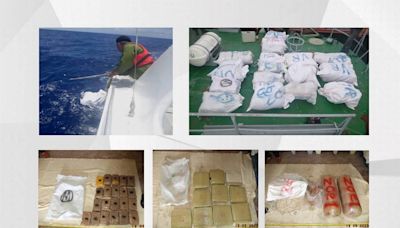Search results
People also ask
When are drugs labeled as illegal?
Is it illegal to use drugs without a prescription?
Is marijuana a legal drug?
Can you get prescribed illicit drugs by a doctor?
- Bath salts. Street name for a family of drugs, synthetic, unpredictable effects, can lead to various harms and risks.
- Benzodiazepines. Often used as sedatives and tranquilizers, risk of overdose and substance use disorder.
- Cocaine and crack. Highly addictive, strong stimulant, dangerous to your health, can be fatal.
- Fentanyl. Highly dangerous and potent opioid, high risks of addiction, overdose and death.
- Bath Salts. These designer drugs came on the scene fairly recently and became popular fast. That may be because they were easy to get and used to be hard to detect in drug tests.
- Cocaine. This drug comes in different forms. A user can snort the powder type through their nose or inject it into their bloodstream. Crack is a crystal form of the drug that’s smoked and absorbed into the bloodstream through the lungs.
- Ecstasy. Users often take this drug by mouth in pill or tablet form. You can also snort it or inject it into a vein. What else it’s called: MDMA or Molly.
- Flakka. This designer drug is similar to bath salts. It is a pale-hued crystal that users eat, snort, inject, or vaporize using an e-cigarette device. It might also be referred to as Gravel, because of the way it looks.
- 2960 N, FL-7 STE 102, Margate, FL 33063
- ccadmissions@legacyhealing.com
- 044 20 7414
- Marijuana. Marijuana, also known as cannabis, is a commonly used drug that is derived from the Cannabis sativa plant. Its active ingredient is delta-9-tetrahydrocannabinol (THC), which causes psychoactive effects.
- Cocaine. Cocaine is a stimulant drug that is derived from the coca plant. It is often snorted, smoked, or injected and can cause a feeling of euphoria and increased energy.
- Heroin. Heroin is an opioid drug that is synthesized from morphine. It can be injected, snorted, or smoked and is highly addictive. Short-term effects can include a feeling of euphoria, slowed breathing, and a reduced sense of pain, while long-term use can lead to addiction, infections, and damage to the liver and kidneys.
- Methamphetamine. Methamphetamine, also known as meth, is a stimulant drug that can be snorted, smoked, or injected like cocaine. It causes a feeling of increased energy and euphoria.
- Schedule I Illegal Drugs
- Schedule II Illegal Drugs
- Other Illegal Drugs
- Why Are Drugs Illegal?
- Resources
Schedule I drugs are put into this category because they have a high potential for misuse, and there is no accepted medical use for the drug, meaning there is a lack of safety in using the substance.2 You can find a comprehensive list of all Schedule I drugs on the DEA’s website. Some of the more commonly used drugs on this list are:3 1. Heroin 2. ...
Drugs will get placed in this category if they have a high potential for misuse and if the misuse may lead to severe psychological or physical dependence. One difference between Schedule II and Schedule I drugs is that Schedule II drugs have an accepted medical use, though they are illegal for non-medical use.2 List of Schedule II illegal drugs:3 1...
Additionally, there are other prescription drugs not listed as Schedule II substances that are illegal to use without a prescription, such as: 1. Oxycodone 2. Hydrocodone 3. Hydromorphone 4. Ritalin 5. Adderall 6. Vyvanse 7. Concerta 8. Valium 9. Xanax 10. Ketamine
Drugs are labeled as illegal if there is a potential for misuse of the substance. The Controlled Substances Act (CSA) was first established in 1970 and attempted to put certain guidelines in place to control illegal drugs. The CSA identified certain factors in deciding whether a substance had the potential for misuse. The factors included:2 1. Evid...
United States Drug Enforcement Administration. Drug Scheduling. United States Department of Justice.Drug Enforcement Administration, U.S. Department of Justice. (2020) Drugs of Abuse, A DEA Resource Guide (2020 Edition). Washington DC: Drug Enforcement Administration, U.S. Department of Justice.National Institute on Drug Abuse. (2012). Commonly Abused Drugs Chart. National Institutes of Health U.S. Department of Health and Human Services.National Institute on Drug Abuse. Heroin DrugFacts. National Institutes of Health U.S. Department of Health and Human Services.Types of drugs and substances. Examples of controlled and illegal drugs and substances include: Controlled and legal substances: Alcohol use; Smoking, vaping and tobacco; Inhalants; Risks of vaping; Cannabis; Prescription drugs: Opioids; Illegal substances: Cocaine and crack; GHB; Heroin; MDMA; Methamphetamine; Psilocybin and psilocin (Magic ...
Jun 22, 2024 · Certain drugs are illegal to sell, make, and use because they have extremely harmful properties, including physical and psychological harm. Some substances can permanently damage a person’s brain if used long-term and excessively, such as methamphetamine.

